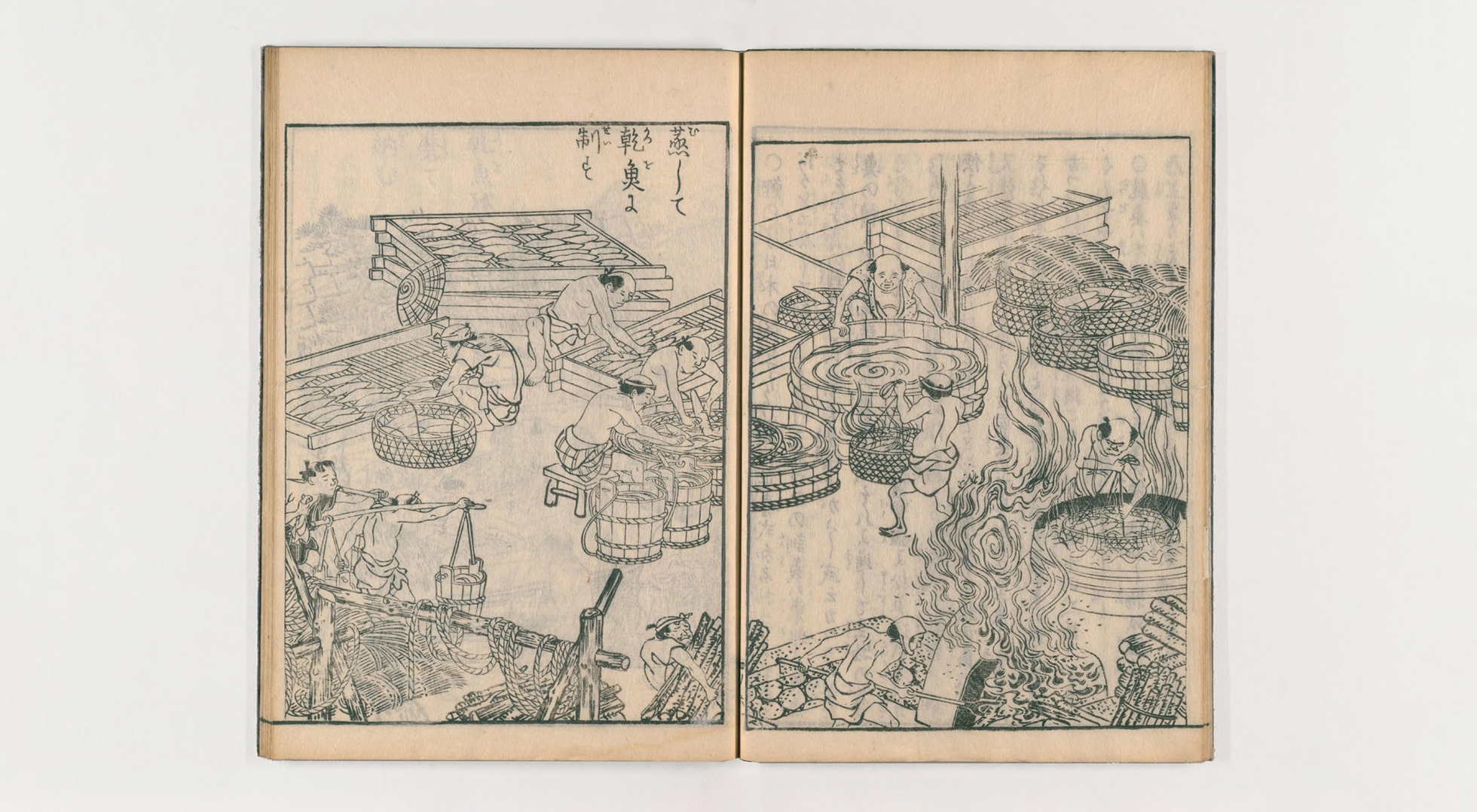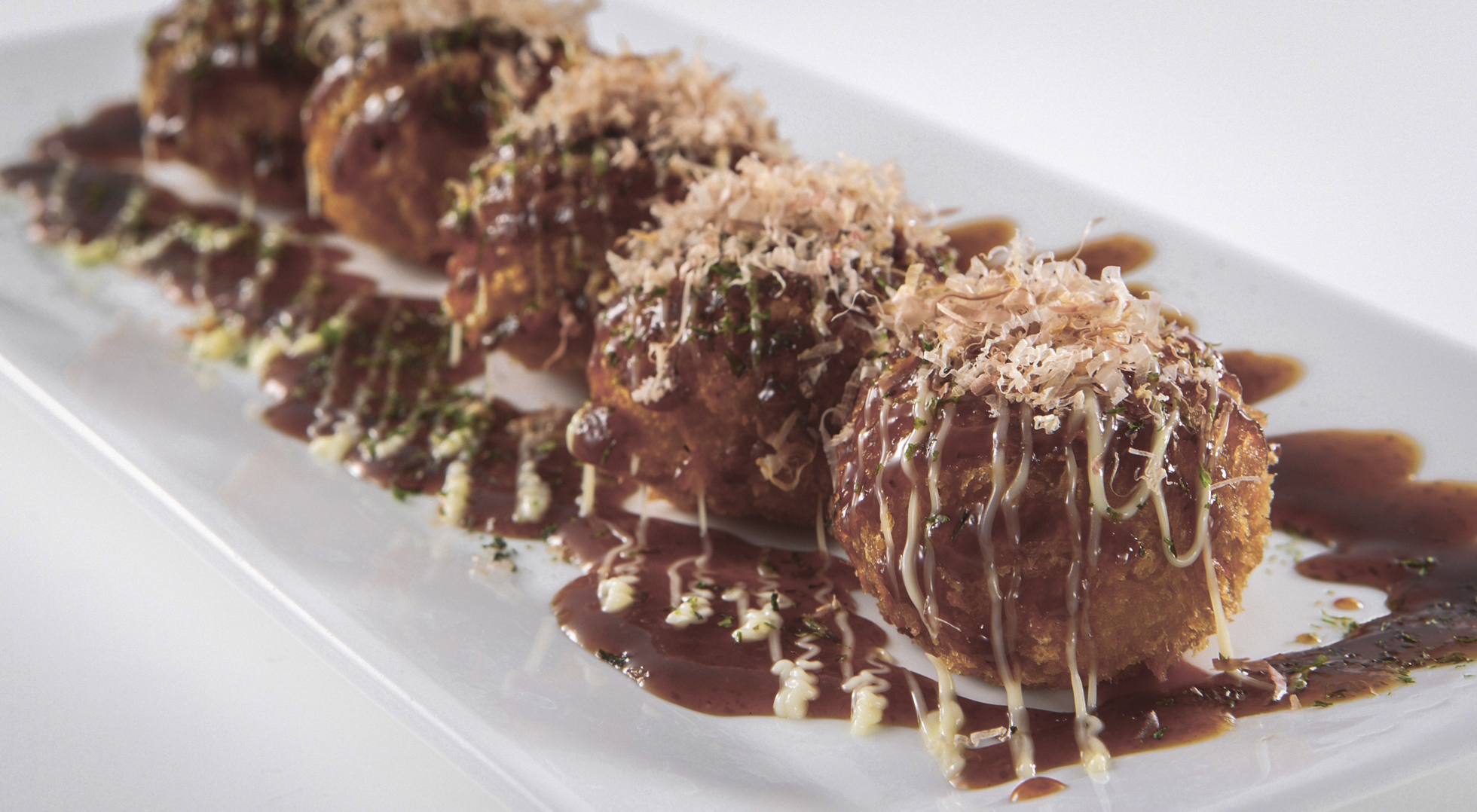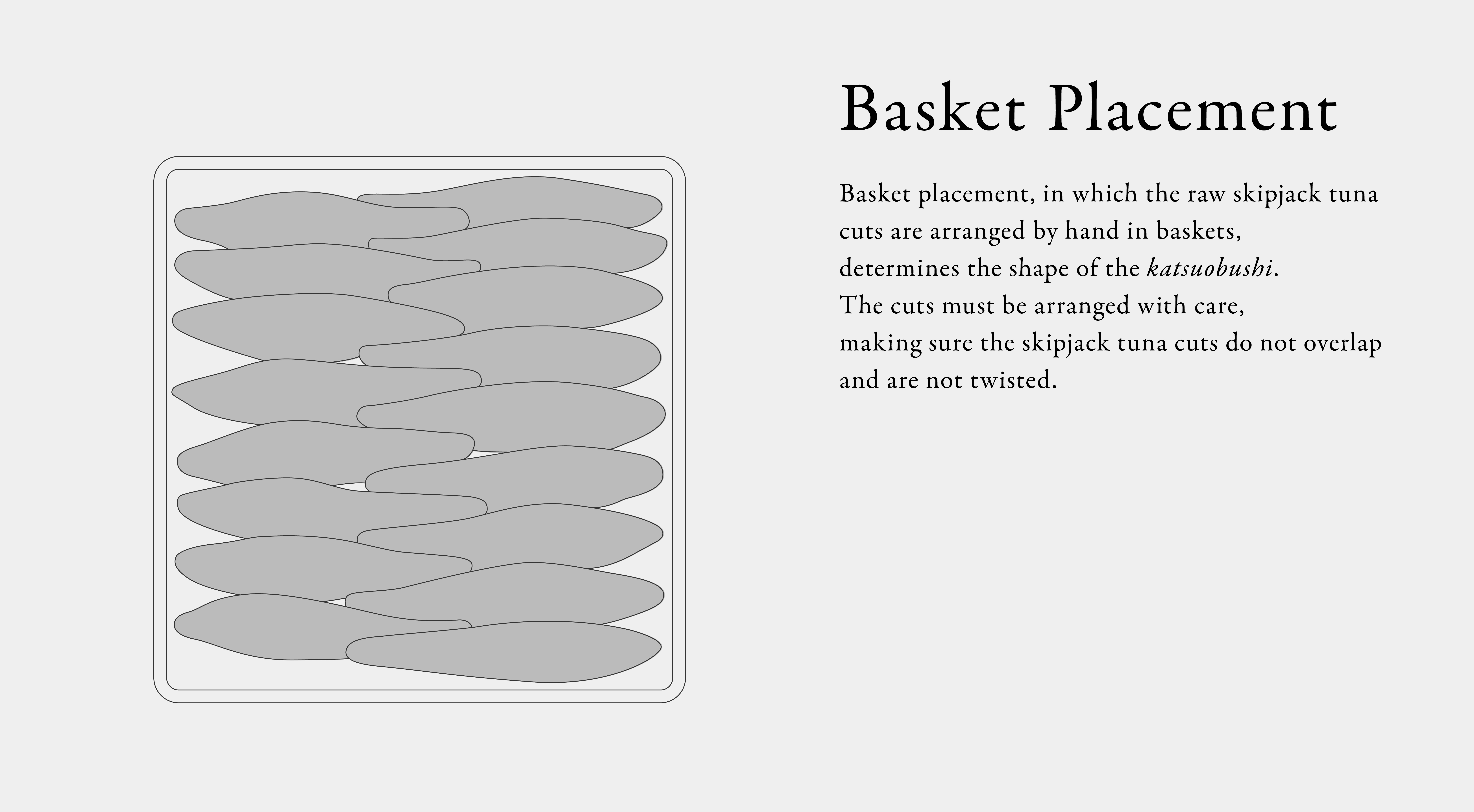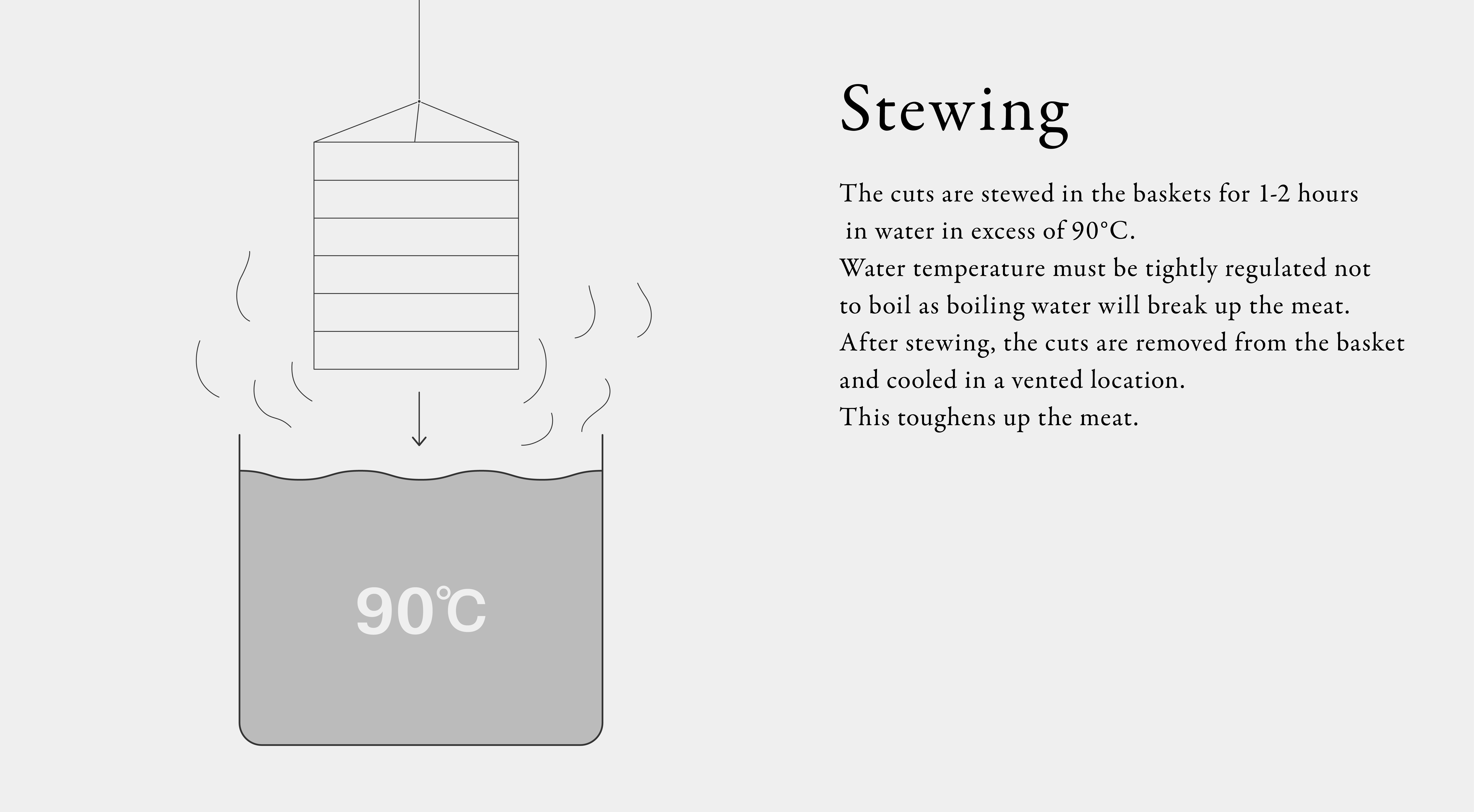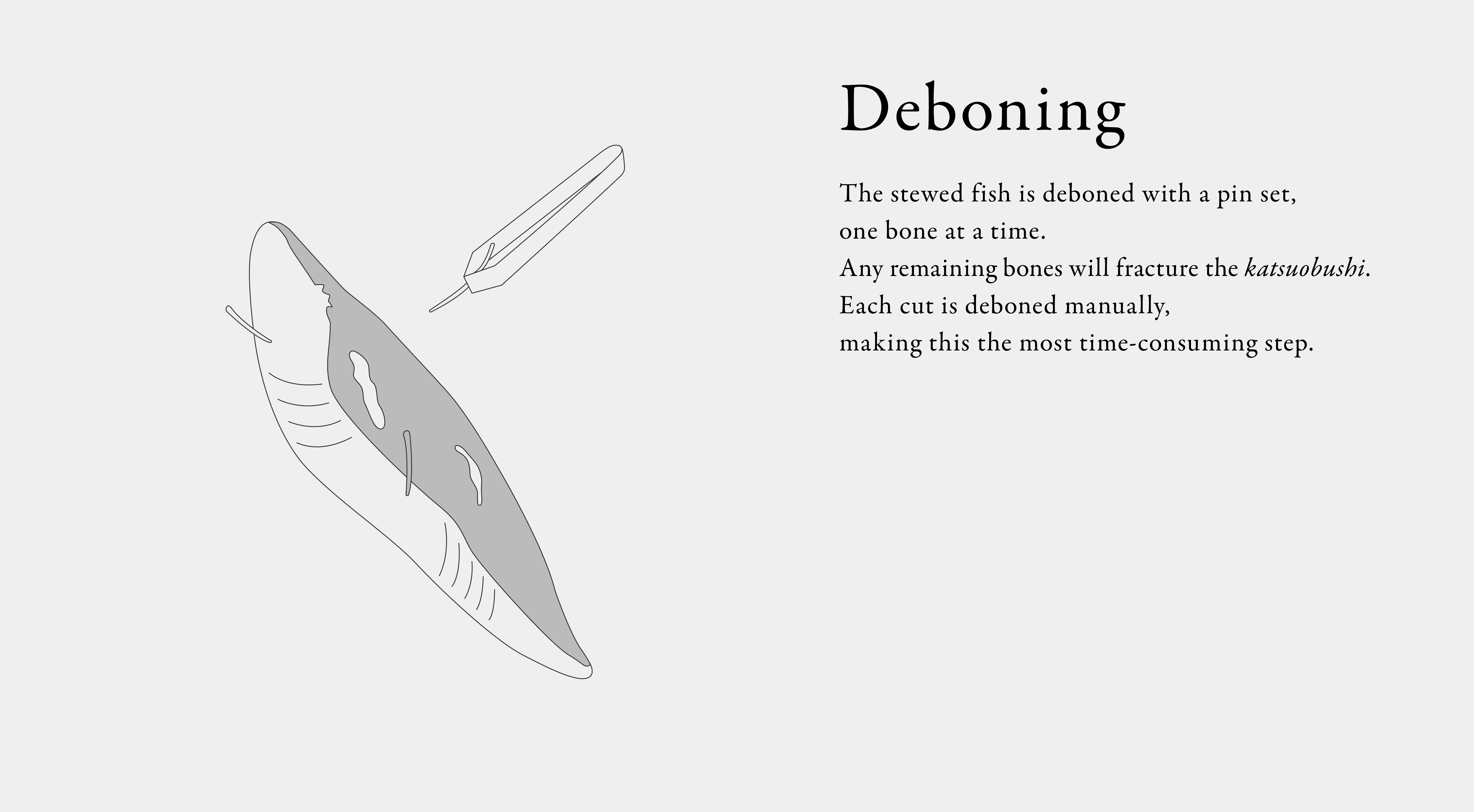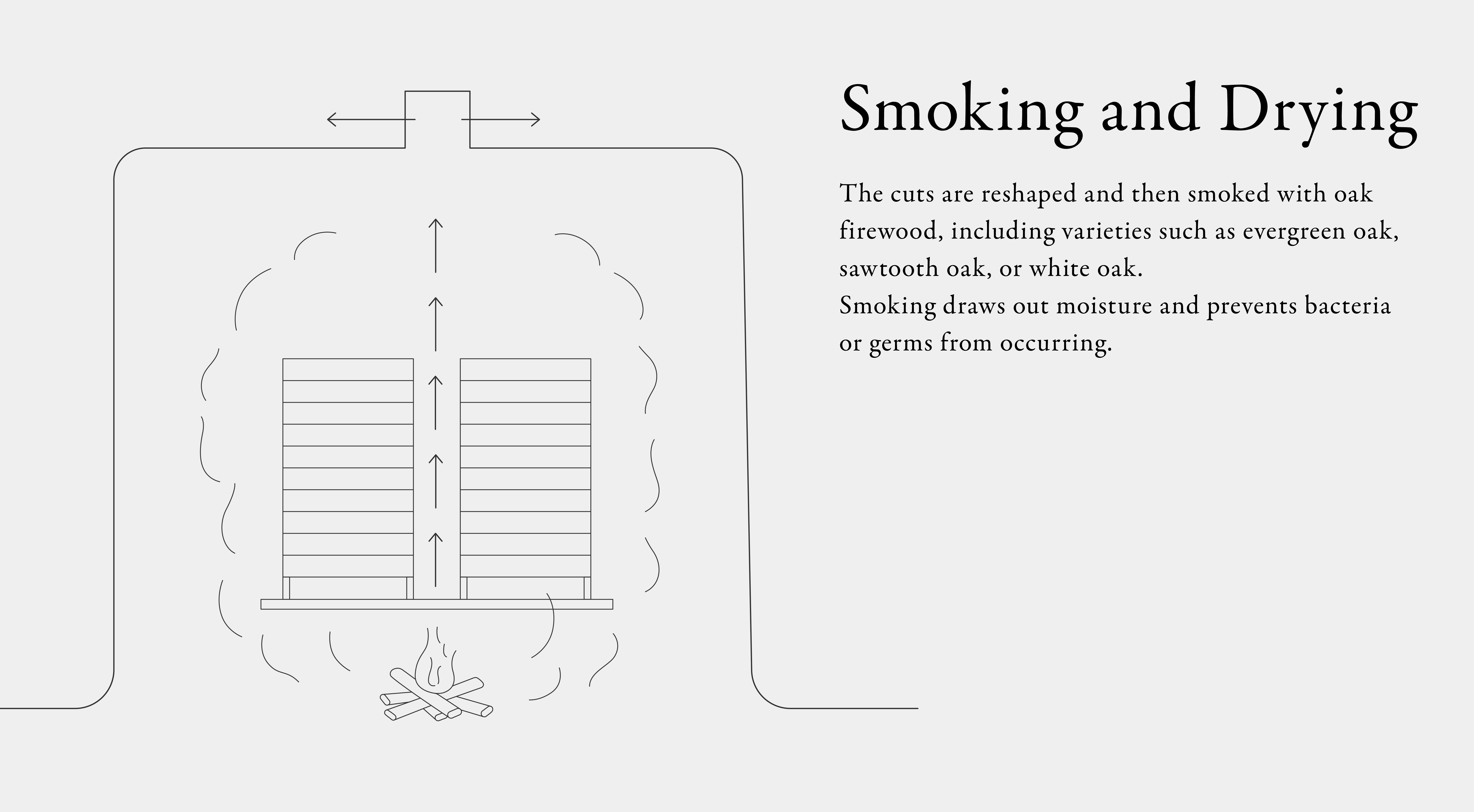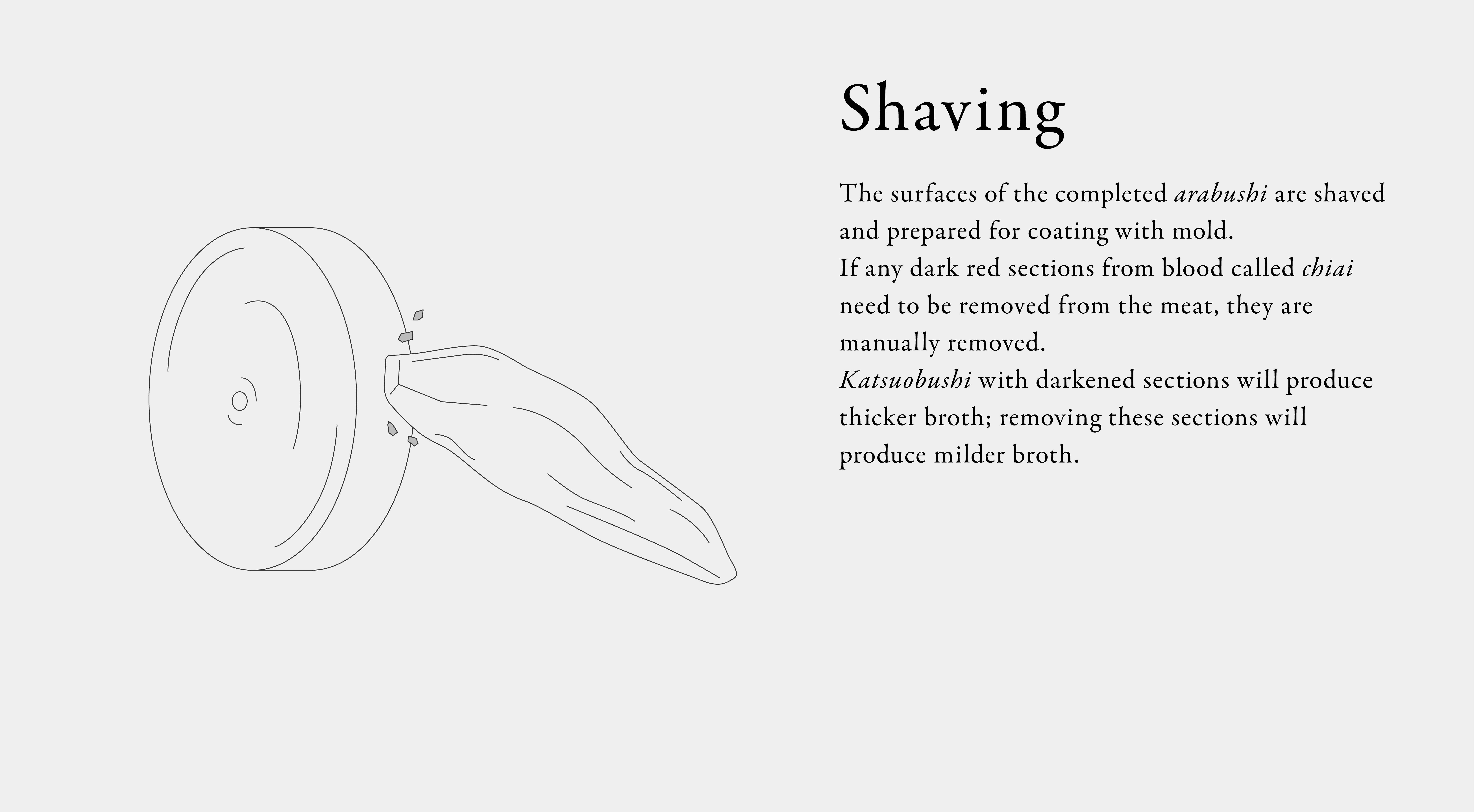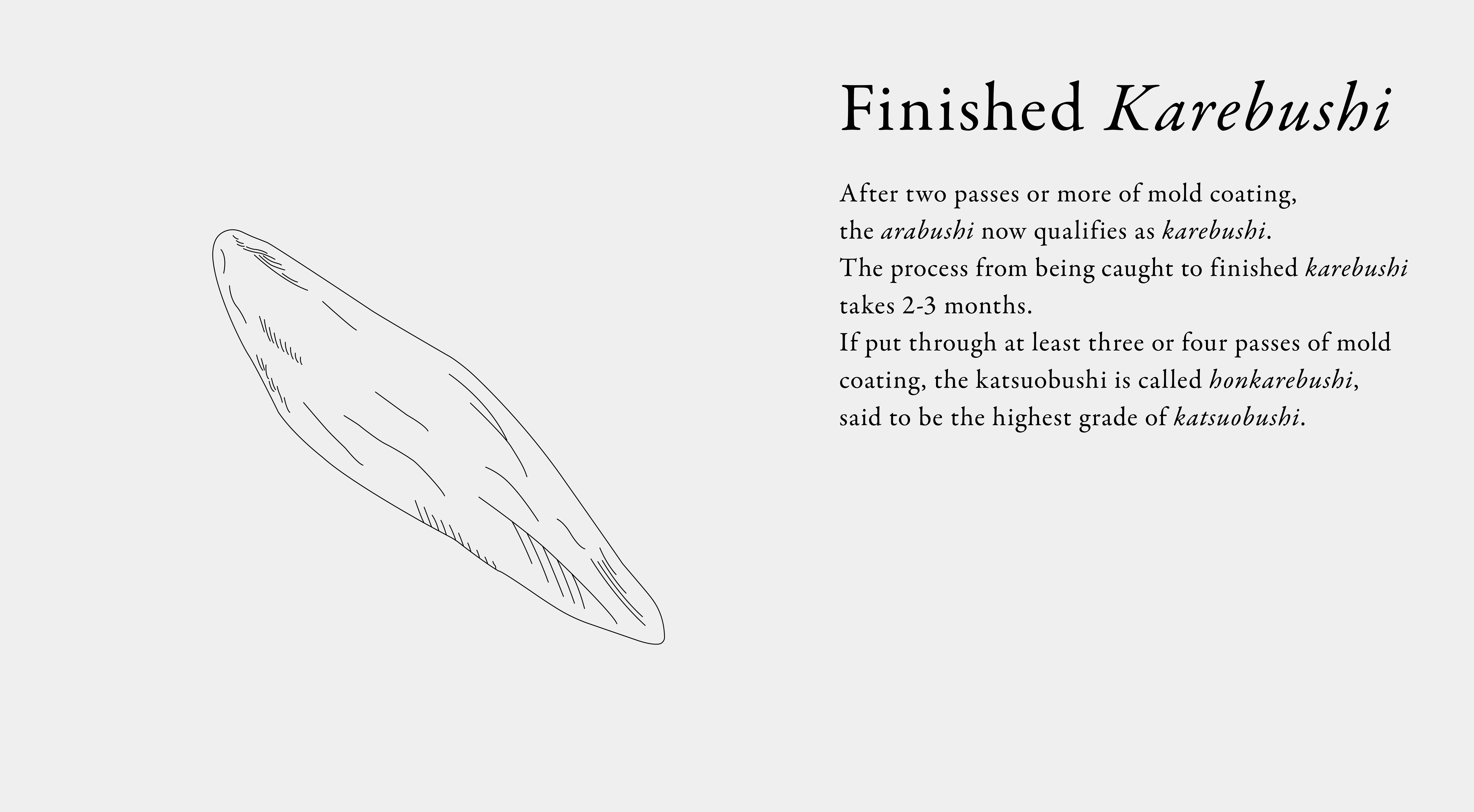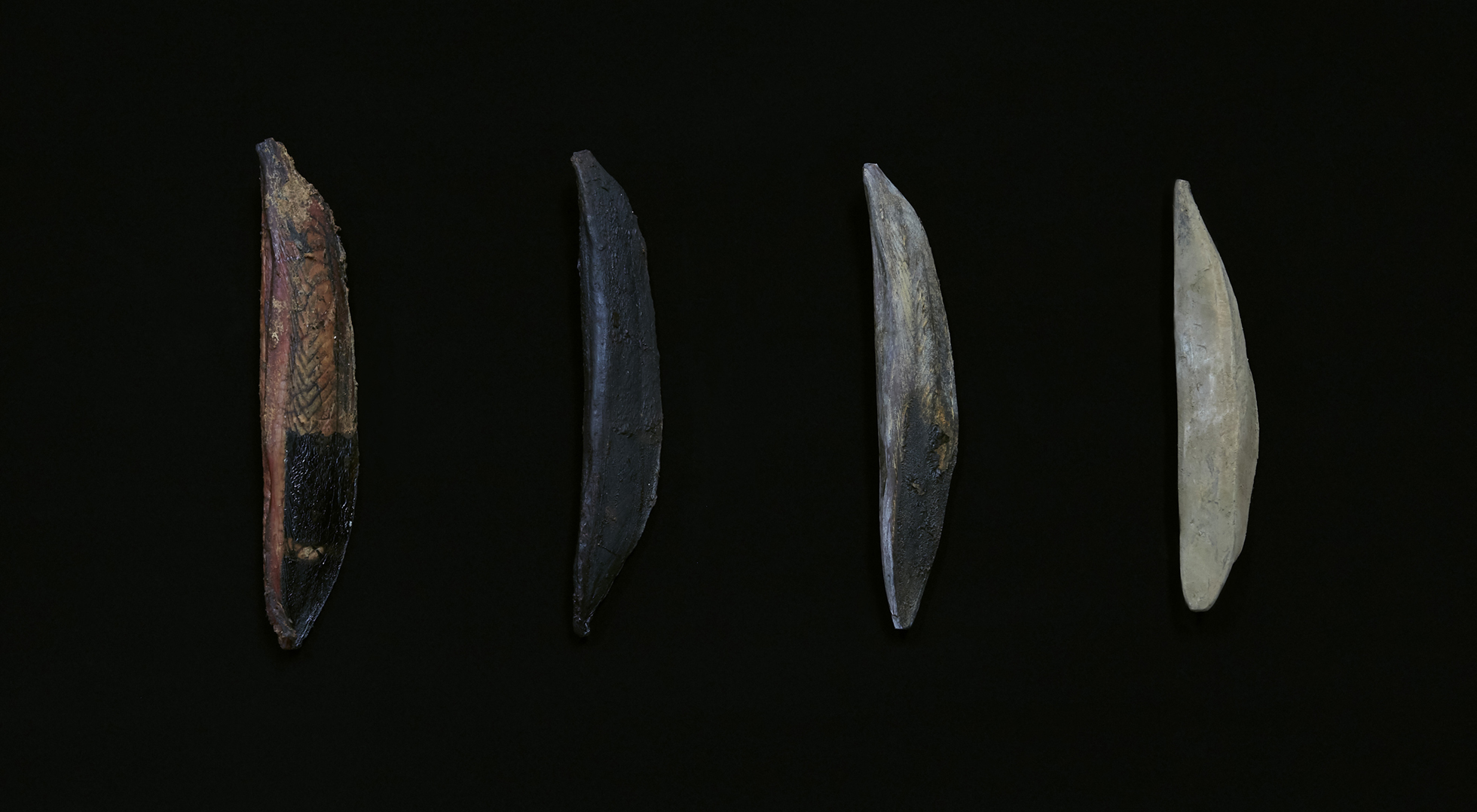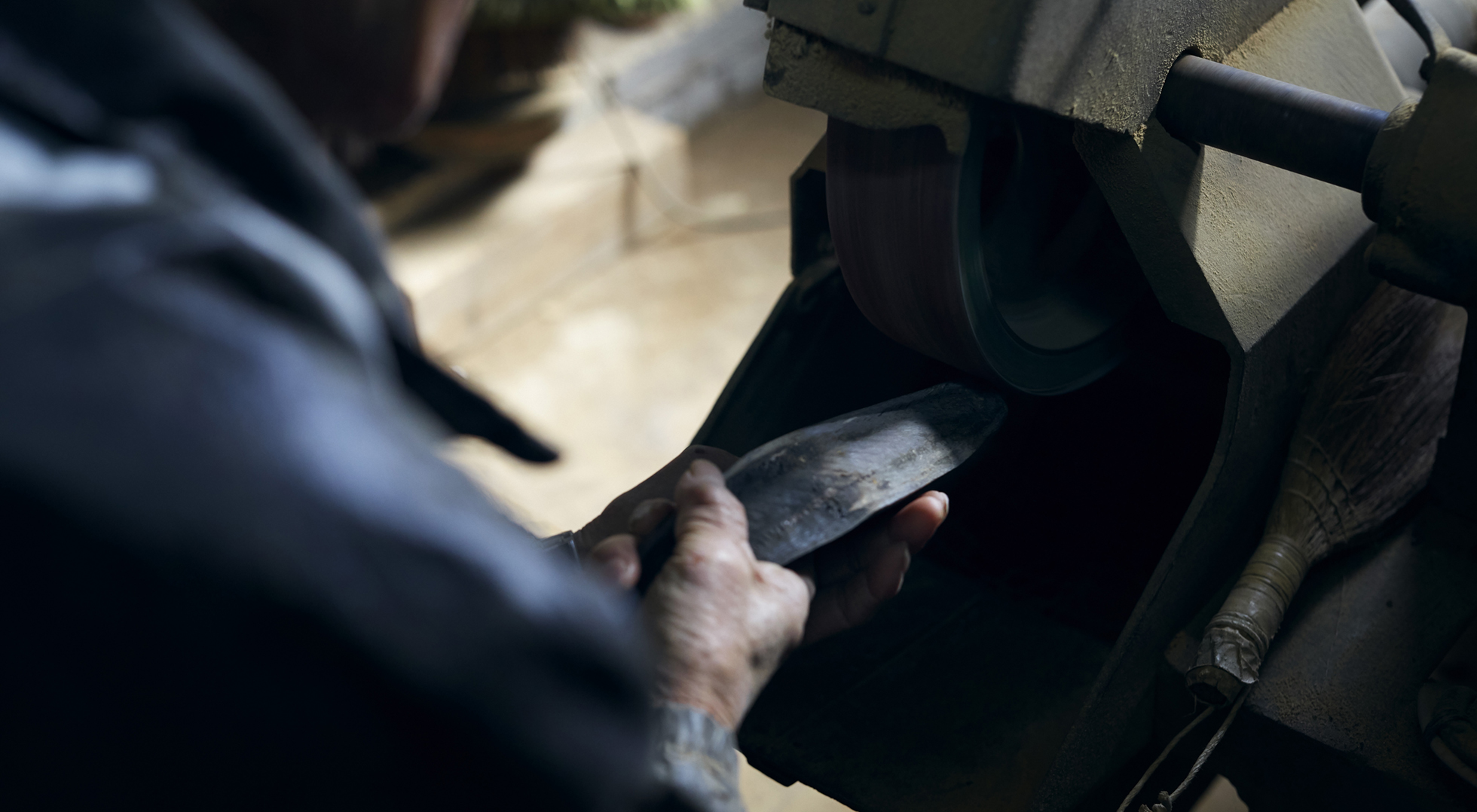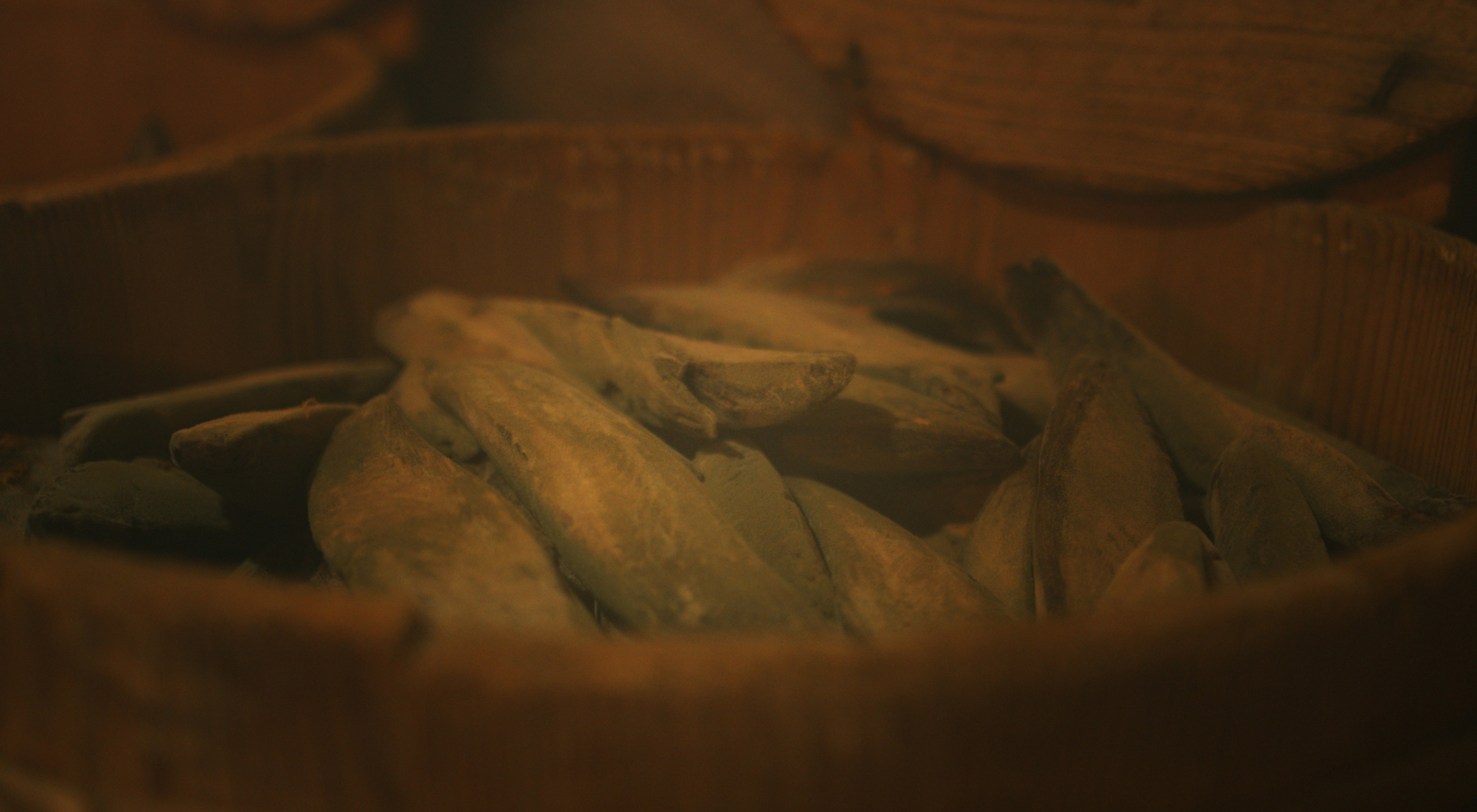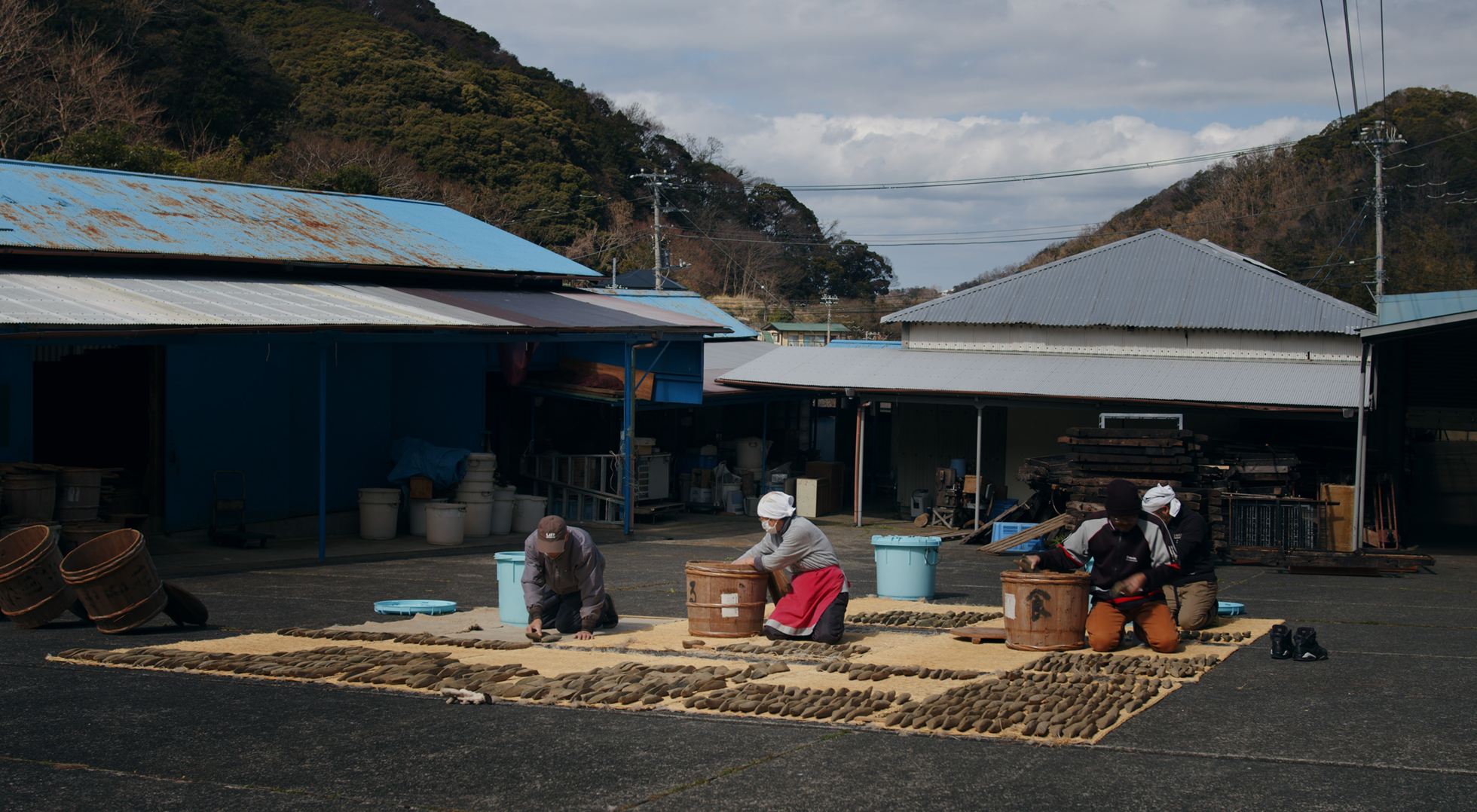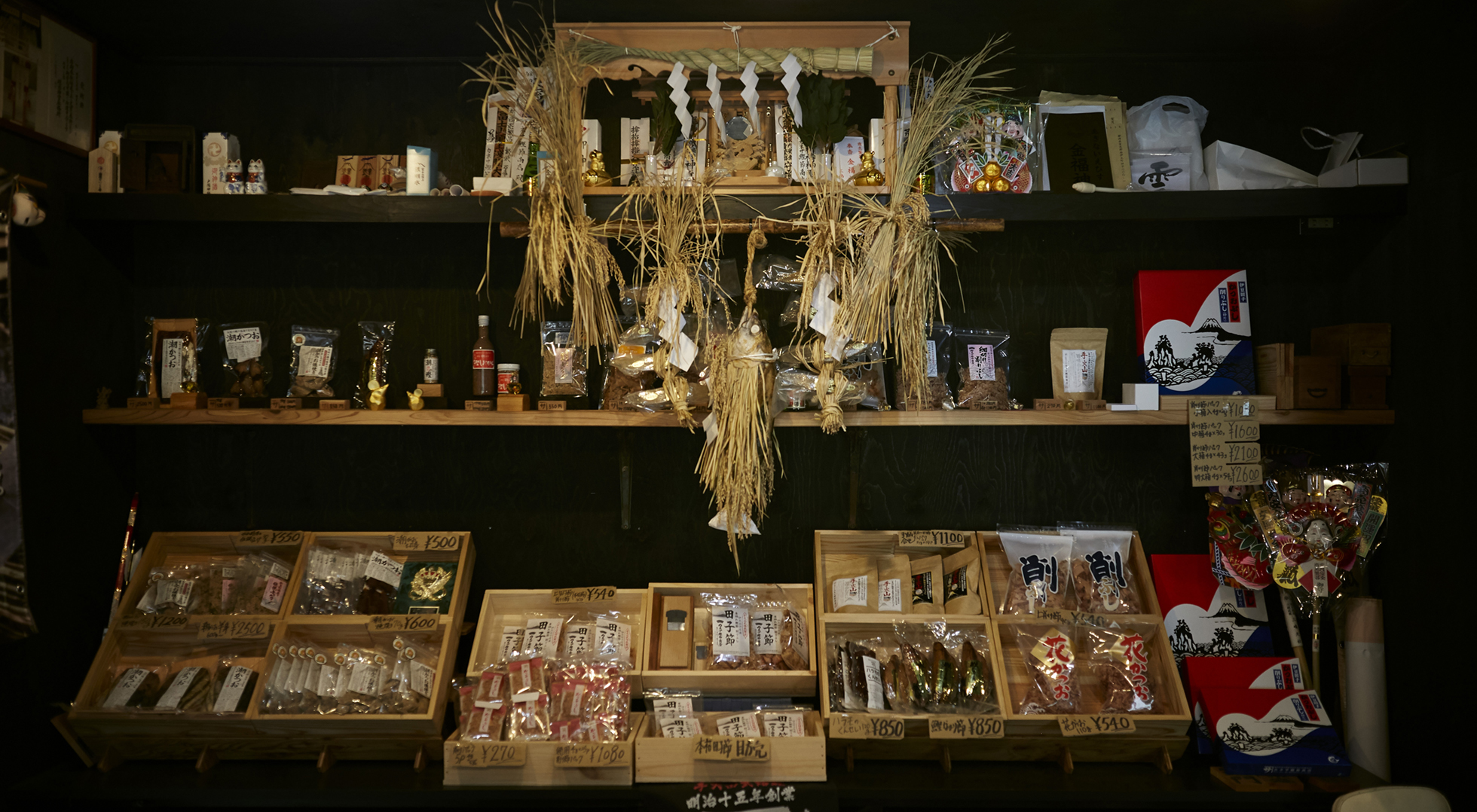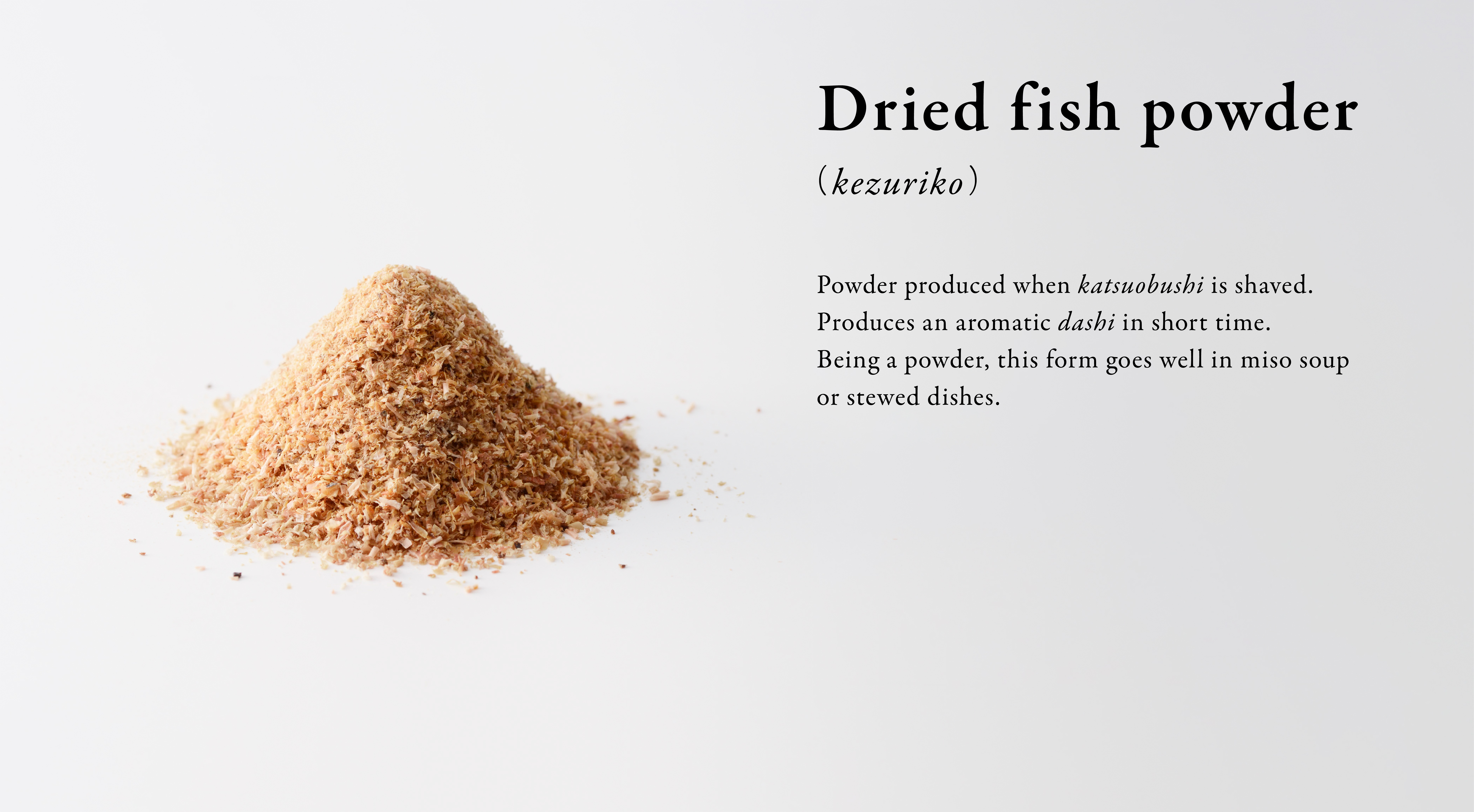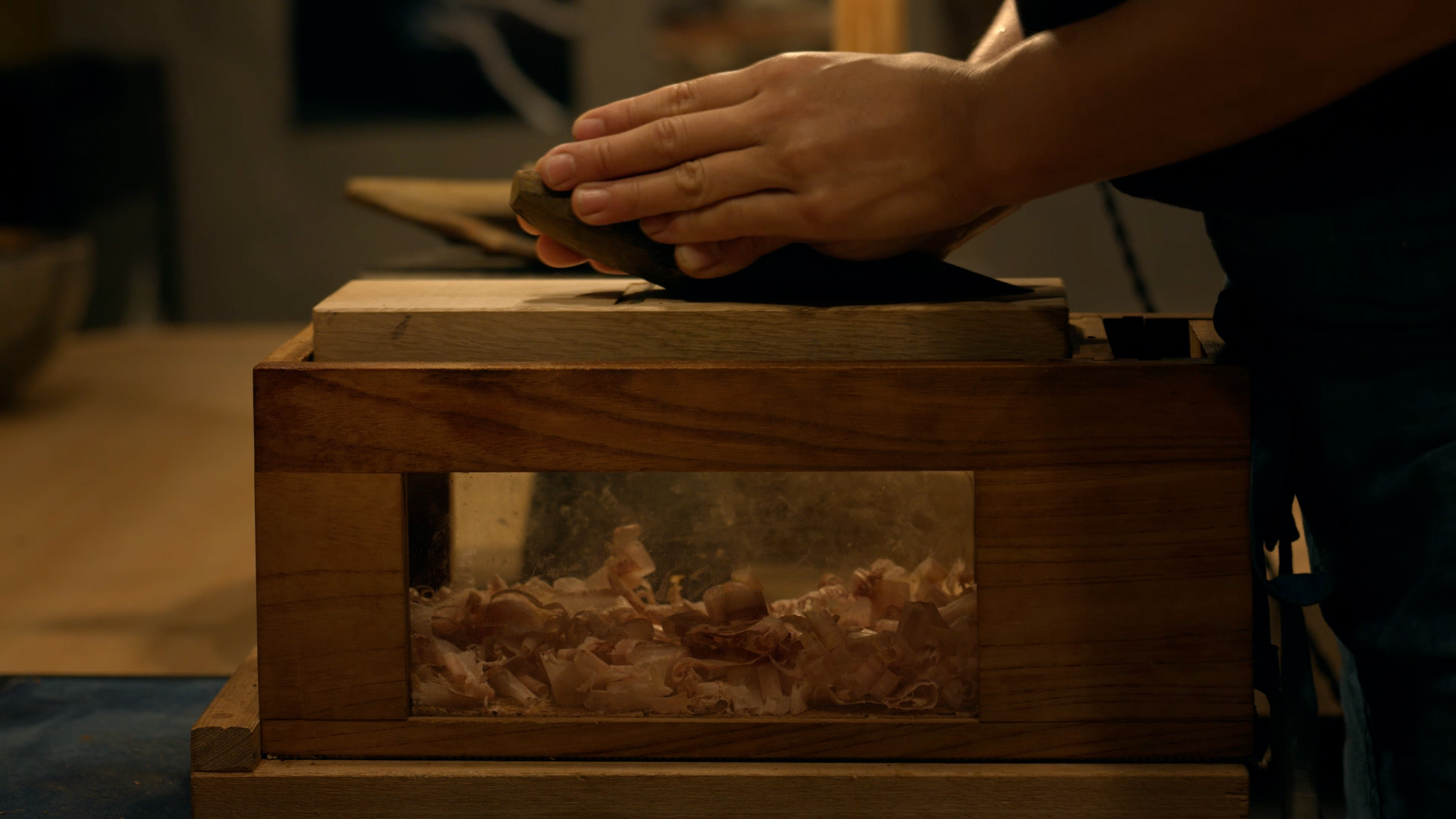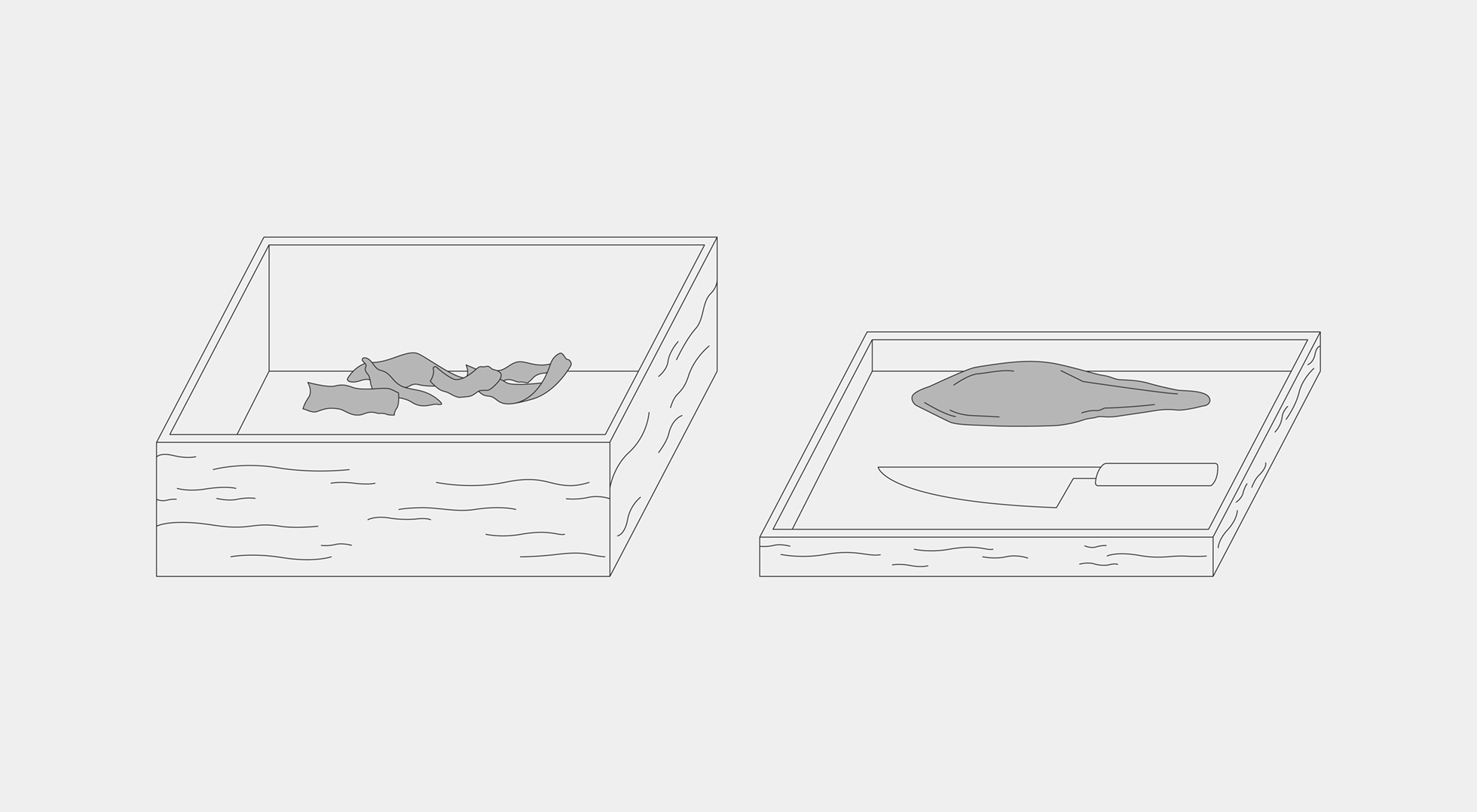Katauo
As evidenced by large quantities of skipjack tuna bones excavated from the Ohora shell mound along the Pacific Ocean in Iwate Prefecture's Ofunato, the Japanese have been eating the fish since the late Jomon Period (4000 BC). The word katauo, an earlier form of katsuobushi’s namesake, appears in the Kojiki, Japan's oldest historic text, dating back to 712 C.E. According to the Ryō no Shuge, the annotated version of the civil code Yōrō Code that was enacted in 757, nikatauo (boiled skipjack tuna) is listed as one option of alternate payment for taxes. This nikatauo is the progenitor product of the process of preserving fish after being dried in the shade and is said to be the origin of katsuobushi.





